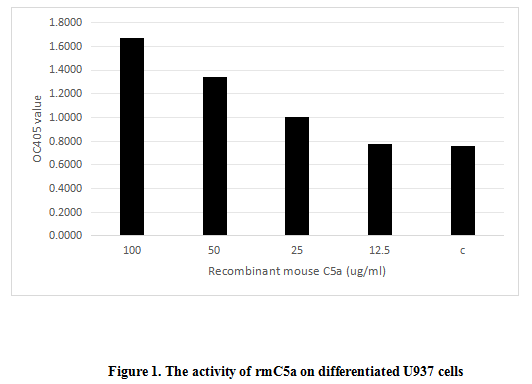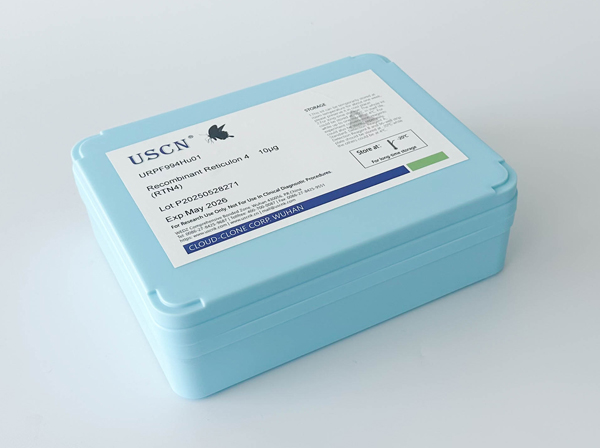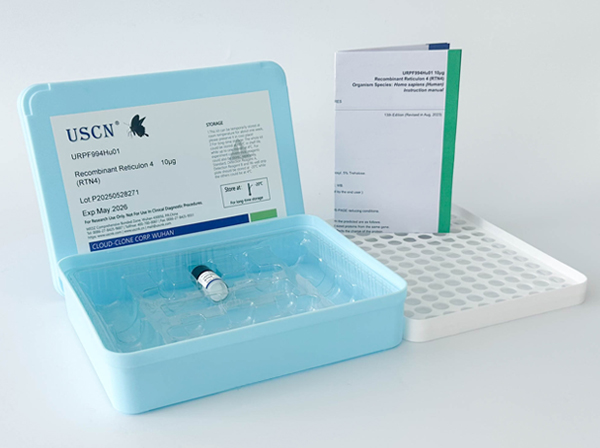Active Complement Component 5a (C5a)
- Product No.UAPA388Mu61
- Organism SpeciesMus musculus (Mouse) Same name, Different species.
- Buffer FormulationPBS, pH7.4, containing 5% Trehalose.
- TraitsFreeze-dried powder
- Purity> 95%
- Isoelectric Point9.3
- ApplicationsCell culture; Activity Assays.
- Download Instruction Manual
- UOM 10µg50µg 200µg 1mg 5mg
-
FOB
US$ 189
For more details, please contact local distributors!US$ 473
For more details, please contact local distributors! US$ 945
For more details, please contact local distributors! US$ 2835
For more details, please contact local distributors! US$ 7088
For more details, please contact local distributors!
ACTIVITY TEST of the Active Complement Component 5a (C5a)

Complement Component 5a (C5a) is a component of the complement system which plays a key role in promoting migration and adherence of neutrophils and monocytes to vessel walls. The activity of recombinant mouse C5a was also measured by its ability to induce N-acetyl-β-D-glucosaminidase release from differentiated U937 human histiocytic lymphoma cells. 3.2*106 differentiated U937 cells were added to the 24-well plate and different concentrations of rmC5a was added to the 24-well plate and incubated at 37 ℃ for 3min. The cells were centrifuged at 400 g for 3min, and the supernatant contained N-acetyl-β-D-glucosaminidase. The enzyme activity of N-acetyl-β-D-glucosaminidase was measured by the substrate of 4-Nitrophenyl 2-acetamido-2-deoxy-β-D-glucopyranoside. The result was shown in figure 1, It was obvious that rmC5a can significantly induce N-acetyl-β-D-glucosaminidase release.
USAGE of the Active Complement Component 5a (C5a)
Reconstitute in 10mM PBS (pH7.4) to a concentration of 0.1-1.0 mg/mL. Do not vortex.
STORAGE of the Active Complement Component 5a (C5a)
Avoid repeated freeze/thaw cycles. Store at 2-8°C for one month. Aliquot and store at -80°C for 12 months.
STABILITY of the Active Complement Component 5a (C5a)
The thermal stability is described by the loss rate. The loss rate was determined by accelerated thermal degradation test, that is, incubate the protein at 37°C for 48h, and no obvious degradation and precipitation were observed. The loss rate is less than 5% within the expiration date under appropriate storage condition.



